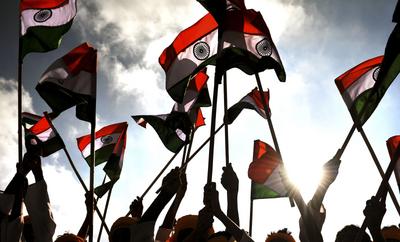Trade between India and Indonesia in 2009–10 was US$12.5 billion, equivalent to 5.9 per cent of Indonesia’s and 3 per cent of India’s global merchandise trade. The official target is to double bilateral trade to US$25 billion by 2015.
To broaden partnership beyond merchandise trade, the two countries have agreed to commence negotiations on a bilateral comprehensive economic cooperation pact. India already has concluded such a pact with Singapore, Japan Malaysia and Sri Lanka.
There are several compelling reasons for urgency in instilling substantive content into the strategic partnership between India’s and Indonesia’s two secular, moderate democracies.
First, the Indian Ocean has become more contested. Nearly 90 per cent of the global trade is seaborne, and of this roughly two-fifths pass through four Southeast Asian Straits — three of which belong exclusively to Indonesia. Managing these sea lanes to minimise any disruptions to trade and logistics supply chains, and to undersea cables vital for digital connectivity, is not only important for these two strategically located countries but also many others.
India’s total international trade in goods and services in 2009 was US$579 billion (44.2 per cent of GDP). This is projected to increase to US$1,500 billion by the second half of this decade. The corresponding figure for Indonesia was US$252 billion (46.7 per cent of GDP). The share of merchandise trade in total trade is much higher for Indonesia (84 per cent) compared to India (71 per cent), suggesting complementarities. Both countries thus have vital geo-economic interests in ensuring smooth functioning of the Southeast Asian Straits.
Second, there has been considerable interest in expanding economic and strategic linkages among low and middle income countries to diversify global risks. This applies particularly to infrastructure, manufacturing, energy, supply chain and logistics, space and satellite related services, and various types of IT enabled services. India projects its need for infrastructure at US$1,000 billion for five years ending in 2017, while Indonesia aims to attract US$150 billion in infrastructure investment.
Both India and Indonesia are keen to attract investments from each other. India’s Tata Motors’ reported plan to set up an automobile plant in Jakarta to produce the Nano car reflects potential investment opportunities in manufacturing.
A recent Confederation of Indian Industry working paper made numerous suggestions on how both countries could reduce business costs through various streamlining processes. There is also considerable scope to reduce business costs through unilateral measures.
The new air-services pact allows multiple airlines to serve India–Indonesia routes and is a welcome step in improving connectivity. Visa on arrival for Indonesians going to India (which are already available for Indians visiting Indonesia) should also facilitate tourism and business visitor flows.
Third, there is considerable scope for collaborative initiatives between the Indian and Indonesian energy sector. Indonesia is already a favoured source for coal imports for thermal power plants located on India’s eastern coastline.
Both countries can also consider joint initiatives in the nuclear energy sector. Although Indonesia does not currently operate any commercial nuclear plants, it has retained a significant expertise in basic nuclear science and research for nearly four decades. Indian experience in the civilian nuclear energy program can be a source of collaborative projects with the Indonesian scientific community as it prepares to lay the foundations for a civilian nuclear energy program.
In particular, Indian construction and operational experience in the heavy water reactor program can contribute to Indonesia’s effort to build a civilian nuclear power program through a joint venture. Besides significantly reducing capital and construction costs, such ventures can facilitate deeper engagement among the two scientific communities and higher educational institutions.
The Indonesian President’s visit led to the establishment of a Trade and Investment Forum and an Energy Forum between the two countries to facilitate regular communication in these key areas.
Fourth, both India and Indonesia are countries with large physical expanses and populations and therefore face similar challenges in managing globalisation dynamics and addressing development and governance challenges.
Both countries, for example, need to address regional inequalities, develop institutions, and cultivate social and political norms which are more conducive to progressing towards status as higher income countries over the next three to four decades. Indonesia’s relatively better performance in health and education sectors should be of particular interest to India.
Both countries belong to several common international forums such as the G20; the East Asian Summit (EAS), comprising of 16 Asia Pacific countries; and the ASEAN Regional Forum. Indonesia will also chair the expanded EAS later this year.
The joint meeting on business opportunities arising from inclusive growth policies of India and Indonesia at the January 2011 Davos meetings is particularly positive for broadening communication between the policy makers and business sectors of the two countries in international gatherings.
The two countries’ decision to set up an Eminent Persons Group (EPG) to shape agenda for bilateral relations over the next several years also holds promise. If used to implement a coherent and forward-looking strategic partnership between India and Indonesia, the impetus for multi-polarity in Asia would look promising.
Mukul G. Asher is Professor of Public Policy at the National University of Singapore. This is a revised version of an article first published by DNA India on 16 February 2011.

